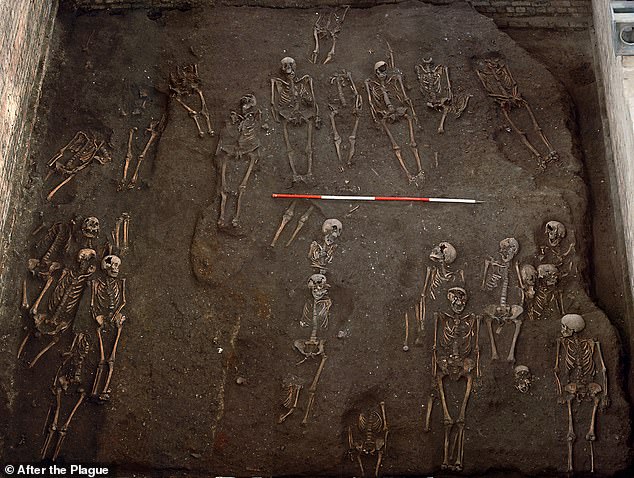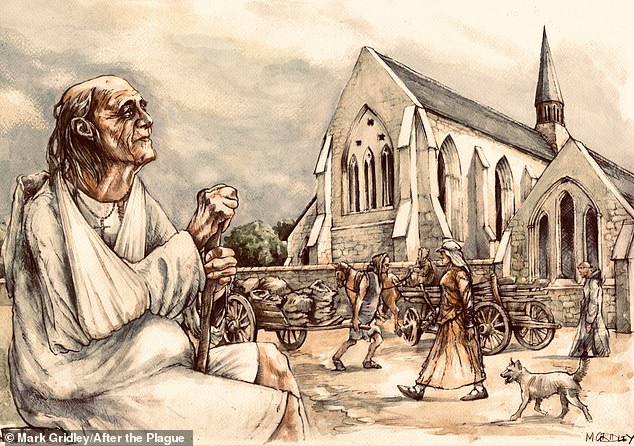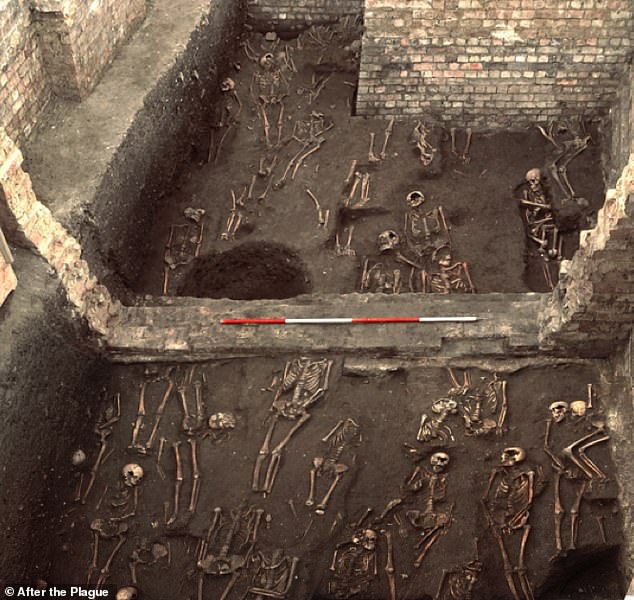Medieval England had a BENEFITS system – but lepers, pregnant women and the insane were prohibited, study finds
>
Today's benefits system helps people who are unemployed, have children or are disabled.
But in medieval England things were a bit different, according to a new study.
Researchers have highlighted decisions made in the 13th century regarding who was allowed to remain in hospital for long periods of time.
Archaeologists have analyzed more than 400 human remains unearthed from the main cemetery of St John the Evangelist Hospital in Cambridge, revealing that the individuals buried there came from a variety of backgrounds – from scholars to orphaned children.
The selection criteria seem to be very strict.
Today's benefits system helps people who are unemployed, have children or are disabled. But in medieval England things were a bit different, according to a new study

Archaeologists have analyzed more than 400 human remains unearthed from the main cemetery of St John the Evangelist Hospital in Cambridge, revealing that the individuals buried there come from a variety of backgrounds – from scholars to orphaned children.
Founded around 1195, the hospital aided the “poor and infirm”, housing a dozen or so inmates – along with a handful of clergy and lay servants – at any given time.
The hospital was established to provide charity to those who did not have a lot of money, but had limited space and funds to do so.
As a result, there was a kind of “benefits” system that helped determine who would receive care.
The hospital population, which was discovered in 2010 when the hospital site was excavated, was analyzed to collect structural, isotopic and genetic data.
The team found that sick and poor orphans frequented the hospital, perhaps out of pity, while scientists were allowed to do so because it led to a “spiritual benefit.”
At the same time, wealthy and upright individuals who have suffered misfortune are also considered worthy.
Being religious was non-negotiable.
However, pregnant women, leprosy sufferers and those considered “insane” were not allowed.
Professor John Robb, one of the authors from the University of Cambridge, said: “Like all medieval cities, Cambridge was a sea of wants.

In addition to the long-term poor, up to eight of the hospital residents had isotope levels indicative of a lower-quality diet in older age, and may be examples of the “shame-faced poor”: those who have fallen from comfort to destitution, perhaps after He became unable to work

Founded around 1195, the hospital aided the “poor and infirm”, housing a dozen or so prisoners – along with a handful of clergy and lay servants – at any given time.
“A few lucky poor people were given room and board in the hospital for life. The selection criteria were a combination of material want, local politics, and spiritual merit.
Inmates were asked to pray for the souls of the hospital's benefactors, to hasten their passage into purgatory—turning the hospital into a “prayer factory.”
The analysis also revealed that inmates were about an inch shorter, on average, than other people living in the city.
They were also more likely to die at a younger age and to show signs of tuberculosis.
Inmates were also more likely to carry traces on the bones of their childhoods ravaged by hunger and disease. However, they also had lower rates of physical trauma, suggesting that hospital life reduced physical difficulties or risks.
The researchers said the children buried at the hospital were small for their ages with up to five years of development, suggesting they may have been orphans.
In addition to the long-term poor, up to eight of the hospital residents had isotope levels indicative of a lower-quality diet in old age, and they may be examples of the “shame-faced poor”: those who have fallen from comfort to destitution, perhaps after To become unable to work.
The researchers suggest that the diversity of people within the hospital – from orphans and religious scholars to wealthy ex-pats – may have helped attract a pool of donors.
“They chose to help a group of people,” the team, which also includes researchers from the University of Leicester, said in the journal Antiquity.
“This not only fulfilled their legal mission, but also provided instances to appeal to a range of donors and their sentiments: the pity aroused for poor and sick orphans, the spiritual benefit to benefactors of the support of pious scholars, and the reassurance that there was restorative help when prosperous, honest individuals, like the donor, had suffered.” Unfortunately.
(Tags for translation) Daily Mail
